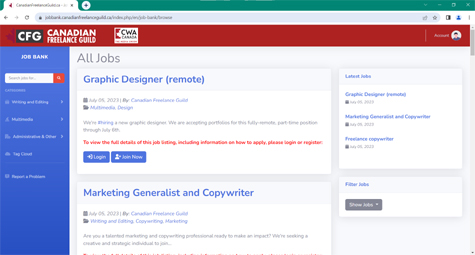Canadian independent media organizations face a critical question in light of the economic difficulties currently confronting all forms of media: ‘is independent media financially viable and sustainable?’
This was the focus of a panel discussion called Financial Models of Independent Media that was hosted by CWA – Canada at the Peoples' Social Forum in Ottawa during the weekend of August 21-24.
The panel examined the financial models of various independent-media outlets and advocacy groups including the Canadian Association of Television Users and Stations (CACTUS), Rabble.ca, National Campus and Community Radio Association of Canada (NCRA), Toronto Media Co-op and Ricochet.
Funds for community broadcasting
Campus and community broadcasting licenses for TV and radio can be expensive, hence the need for revenue forms like ads and sponsorships.
Commercial TV broadcasters are also required to spend 2% of their operating budget on engaging in community produced content. While those funds help community stations, CACTUS is lobbying the government to have that 2% pooled into an engagement fund accessible by community start-ups.
As CACTUS executive director Cathy Edwards pointed out, “the fund could hold an estimated 130 million dollars which could fund approximately 250 community TV channels Canada-wide.”
For communities looking to start an independent TV station, the process of accessing these funds for community start-ups could be as simple as applying for a grant.
A similar fund already exists for community radio stations.
A recent Canadian Radio and Telecommunications Commission (CRTC) initiative has seen the creation of a 4 million dollar pool for community radio funding called the Community Radio Fund of Canada (CRFC).
NCRA executive-director Shelley Robinson represents 85 campus/community radio licenses across Canada, with operating budgets from $2500 to over $500,000.
Robinson highlighted that community stations will be able to apply to CRFC funds “in the form of a grant starting this year.” The funds would allow campus/community stations to devote less time fundraising and more to focus on producing content.
Crowdfunding campaigns
But the emergence of digital multi-media is allowing more indie-media hubs to be creative when imagining fundraising without access to grants.
That is exactly how Ricochet approached their fundraising ambitions.
Over the past year they ran one of the most successful crowd-funding campaigns ever for an alternative media group, raising some $85,000.
Gabrielle Brassard-Lecours, a co-founder of Ricochet, insisted the group’s primary goal as a “progressive media” was for it to be a free, professional news source. “We felt the need to build this media because there was not the voice for progressive news and most importantly professional information.”
She noted that Ricochet was born out of the student strike in Quebec. "The media in Quebec did not report on both sides of the strike fairly, so activists in the student movement felt the need to create a media that would report both sides.”
But is a crowd-funded model financially viable?
At hypothetical annual salaries of $20,000, Ricochet’s team of 10 writers would run an annual operating budget of $200,000 – well outside their crowd-funded budget of $85,000. Alternative ways to fund the project will have to be found.
Hybrid funding models . . . and creative solutions
Another larger indie-media projects, rabble.ca, got their start-up funding in the form of a $400,000 grant.
In the first year of their operation they paid their journalists industry-standard salaries. But speaking at the panel, Kim Elliot of rabble.ca revealed that after the first year the group had to step back and drastically restructure. “The initial year the writers were paid the same rate as at The Globe and Mail with the belief that if you produced good journalism people would pay for it. They quickly found in our first year that that didn’t happen.”
Rabble.ca has since become a non-profit and has adopted a hybrid model of funding, accepting small donations from individuals, NGO/union sponsorships and small amounts of ad revenue.
But $400,000 grants are not very common, so where does that leave other media organizations?
Geordie Dent of the Toronto Media Coop offered hope by talking about the Media Coop’s success in the face of economic precariousness.
“As much as The Media Coop can feel like organized chaos, I look back at the numbers, how many have read our articles, how many have written articles. . . In terms of production, I never thought I would be part of organization that could produce that much.”
If you are trying to establish an alternative media outlet remember it takes imagination to fuse traditional revenue sources with new ones. Do not shy away from donations, use government funds where they are available and while crowd-funding may seem like a trend, it produces results.
And if you are still skeptical just ask Dent what he thinks about the financial viability facing indie-start-ups.
“It’s not only financially viable. It’s happening.”
Christian Deo is a freelance reporter specializing in radio and social justice issues, and a CWA Canada Associate Member.




